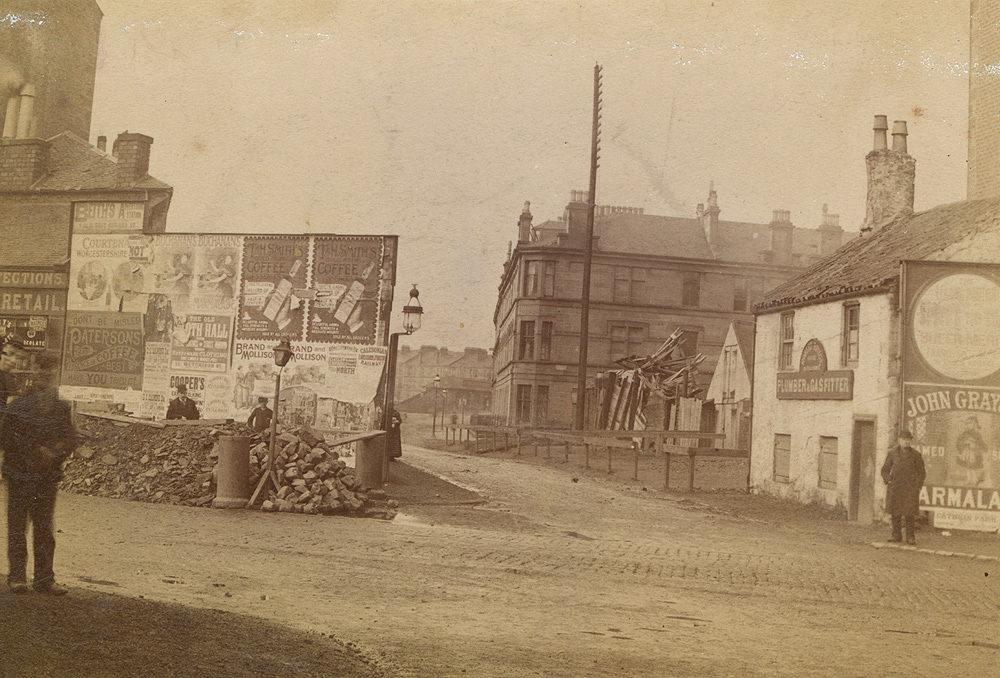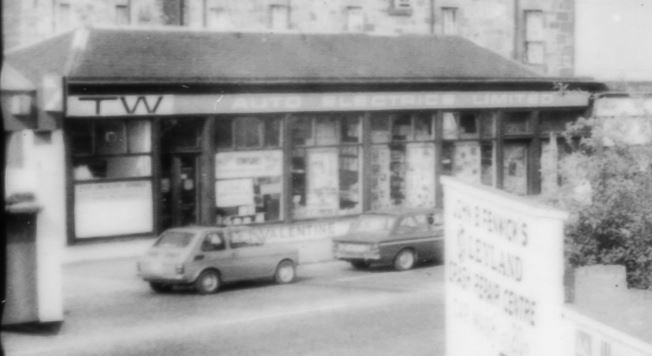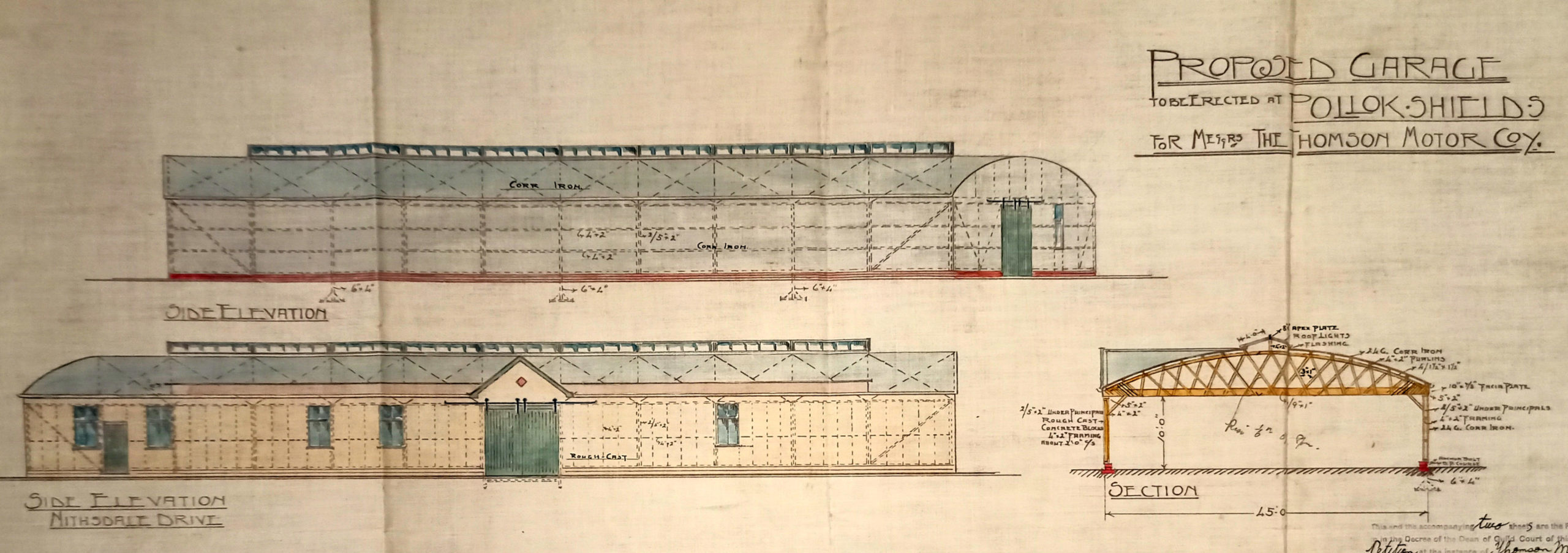Fourth article in a series about Strathbungo’s motor garages.
The Regent Park Motor Garage was founded in the earliest days of motoring and survived for nearly seventy years, and yet information is limited, photos extremely rare, and it has left almost no trace.
The garage was opposite Fenwick’s on Nithsdale Street. The early history of this plot of land is described in the recent post about 2 Nithsdale Street and Duncan Brown’s photograph of Robert Bryce’s plumbing business.

Junction of Pollokshaws Road and Nithsdale Street c 1895 by Duncan Brown. Robert Bryce’s plumbing business abuts the tenement gable end on the right. Source: Glasgow School of Art Archives
Bryce’s building was taken down around 1899, and a planning application was submitted that year to open a shopfront in the end gable of the adjacent tenement, and extend the shop over the railway line where it passes under Nithsdale Street.







Recent Comments